Gobi bear: these brown bears survive in the dead Mongolian desert (8 photos)
Where do bears live? Weird question! And the schoolboy knows: brown bears live in the forest, white ones freeze bones on an ice floe. If you are too think it's time to meet the gobi brown bear. This is the only clubfoot in the world that has learned to live in the desert! How do they even manage to survive there? Spoiler - with grief in half. 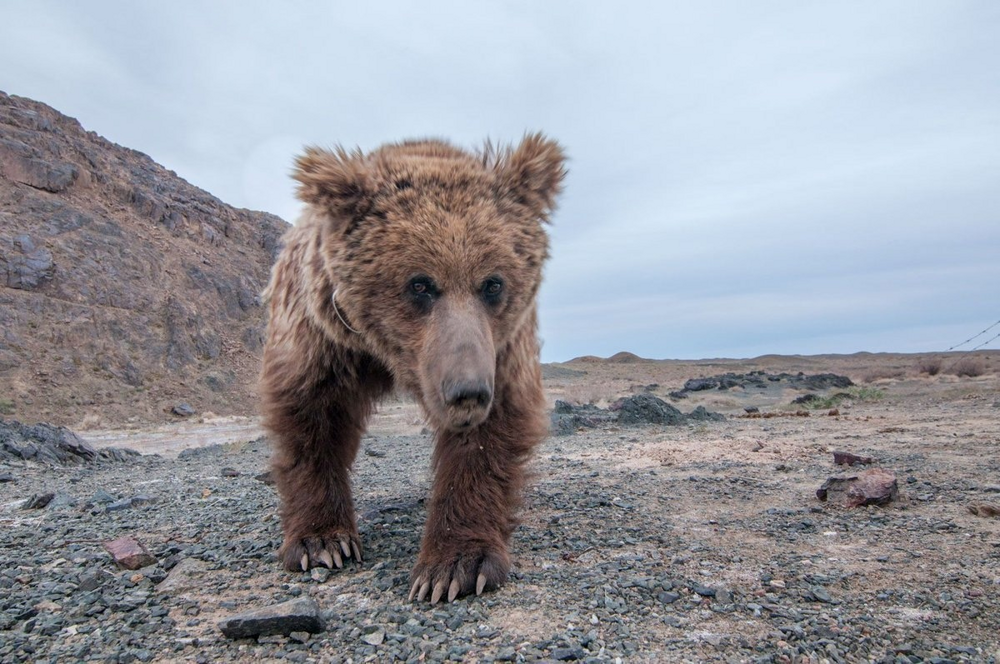
Submit for food!
Gobi brown bear, or in Mongolian mazaalai - the animal is truly unique in its ecosystem. It is not known exactly when, why and why bears changed more or less comfortable environment habitat for wandering through the endless wild dunes. But the fact remains - today you can meet clubfoot only in the South-West of Mongolia, in the Gobi desert. Current the animal population is fragmented and concentrated on three small areas with several oases on each. 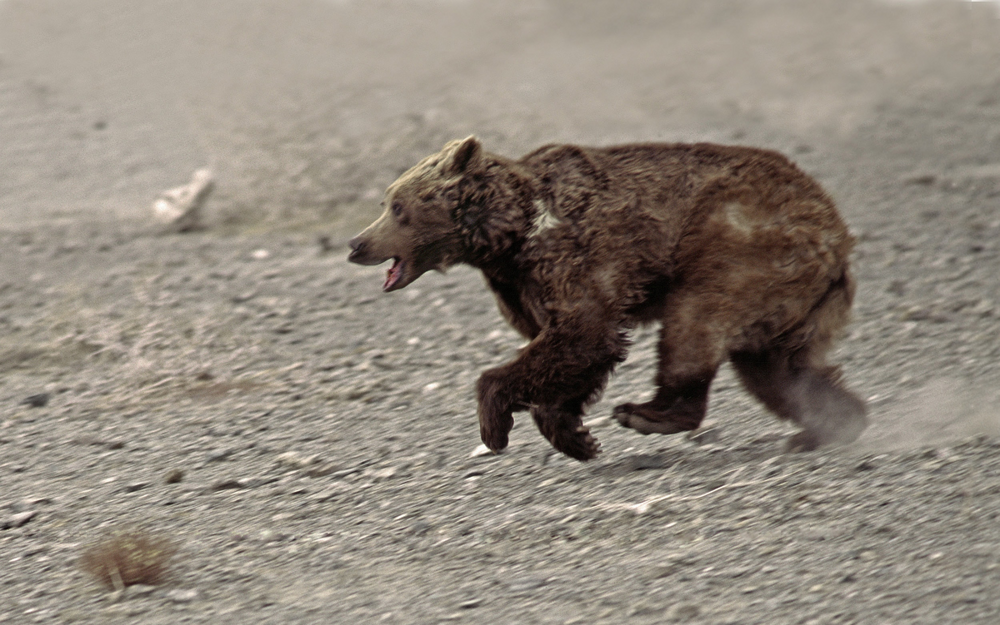
The bear runs after the same minibus, which has just went right out from under his nose. Let's sympathize with the clubfoot!
This place is notorious for its harsh continental climate and rocky-sandy landscape. Winter temperature environment in the desert drops to -40⁰С, and in summer the air warms up to + 45⁰С. Also, the weather is changing here. in a patient with bipolar disorder: the run-up of the daily amplitude sometimes reaches 35⁰С!
In such extreme conditions of a large sandbox, even it is difficult for small animals to survive, and here is a whole bear! You are probably waiting for interesting details, like mazaalai cope with all the hardships of desert hermits? Incredible superpowers, perfect balance of metabolism, genetic chips, non-standard solutions for appearance - bears do not have all this. 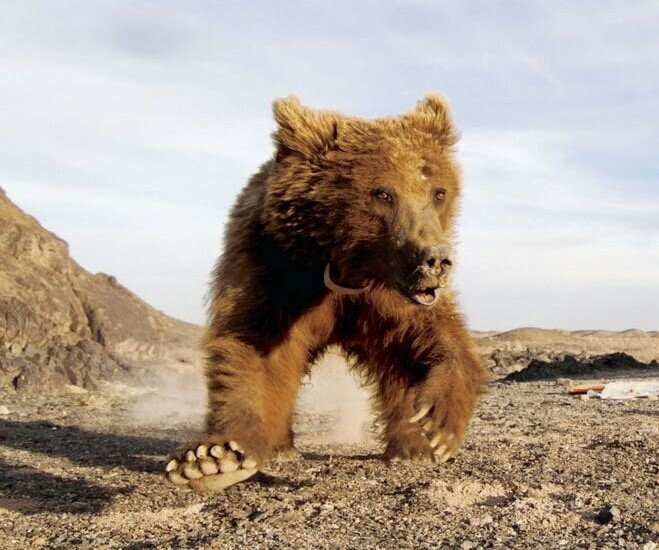
This is me trying to get to work by 8:00, leaving the house at 8:20.
Compared to other subspecies, unique gobi mazaalai are more like thin and shabby courtyards dogs. So, European brown bears usually gain under 350 kilograms. live weight, and the average performance of our heroes - only some 50-120 kilograms! And they survive in the desert literally to the limit. 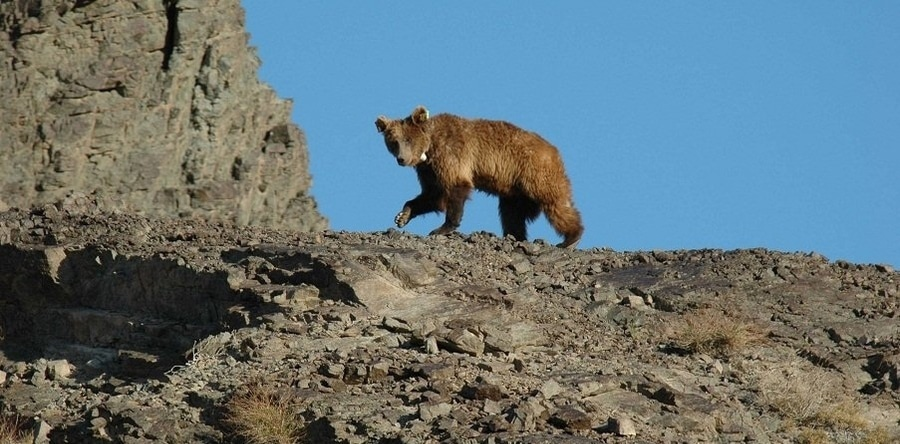
Bears use their claws to climb rocks and ledges very well.
According to research by Chinese biologists, as as of 2022, only 51 bears live in the Gobi. Uneven the ratio of males and females, coupled with low genetic diversity and a high degree of inbreeding greatly slow down population growth process. Yes, and the animals themselves breed don't rush. Looks like it's breeding season the Mazaalais fall in the spring-summer. At this time the males travel long distances from a single source of water to another in search of a female. The meaning of looking for love throughout there is no desert - sooner or later, thirst itself will introduce the newlyweds. 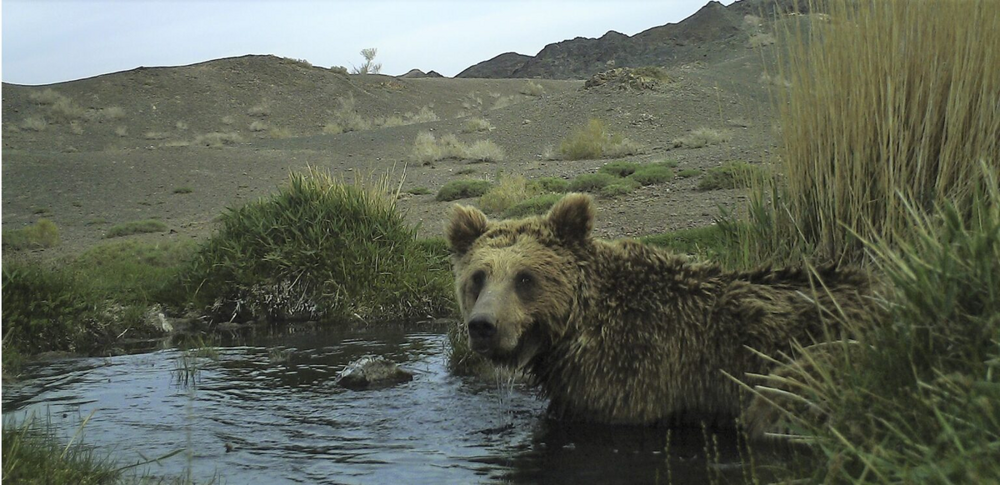
Yes, I found the lake. Where is the female?
After mating, the bear begins to actively fatten. At least he tries, because more than 90% of the menu of bears consists of from sparse desert vegetation. Animals eat tops, roots and berries, occasionally snacking on rodents and insects. 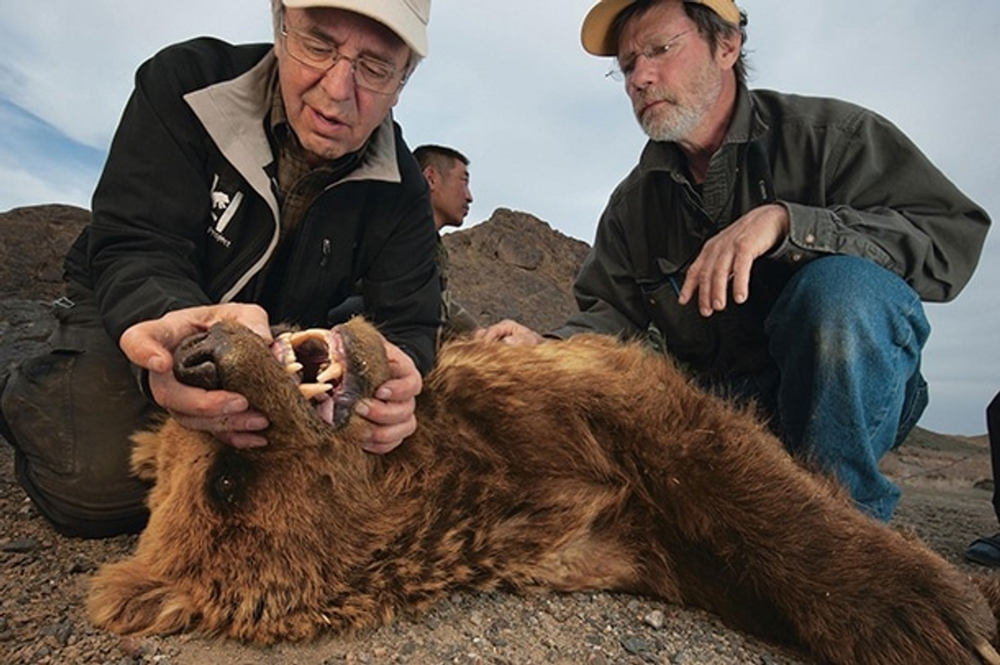
When friends in the morning are trying to understand if you are alive after yesterday.
The harsh Gobi winter is spent by the Mazaalai in cave-dens. Bears hibernate in November and wake up by February-March, depending from the weather outside. Reproductive success is also more degree depends on the weather - if the female managed to gain sufficient mass before hibernation, cubs to be. in the lair one or two blind helpless babies will be born, and for the next two and a half years, the mother will be completely provide them. 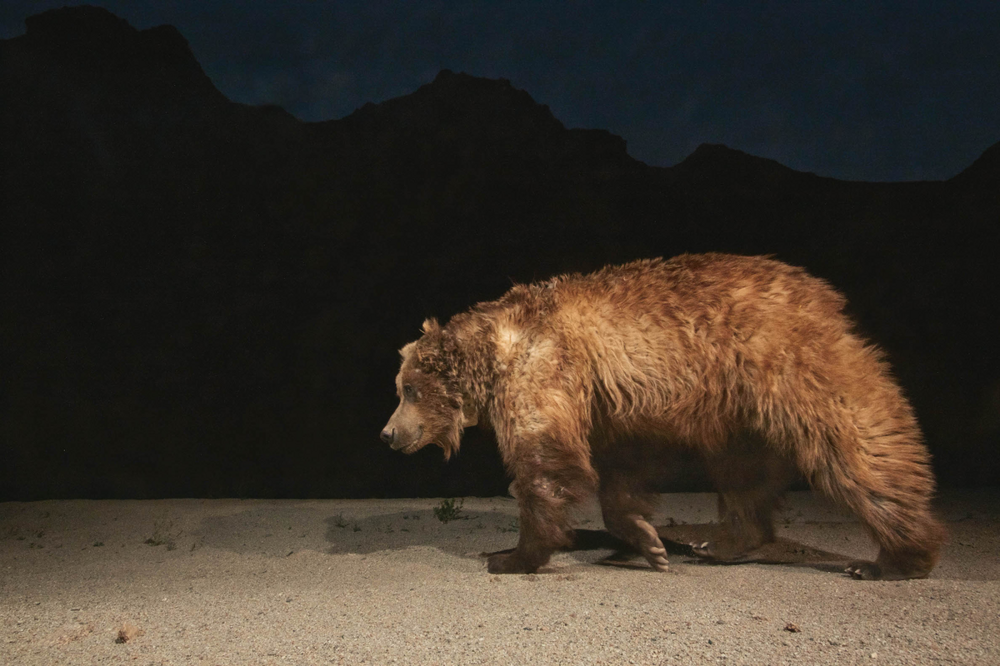
I've been wandering in the desert all my life and I can't find a way out!
Funds created to restore the population of gobi bears and organizations for protection and protection. On the Mazaalays themselves it has long been impossible to hunt, and most of the entire current range clubfoot is considered a specially protected area. 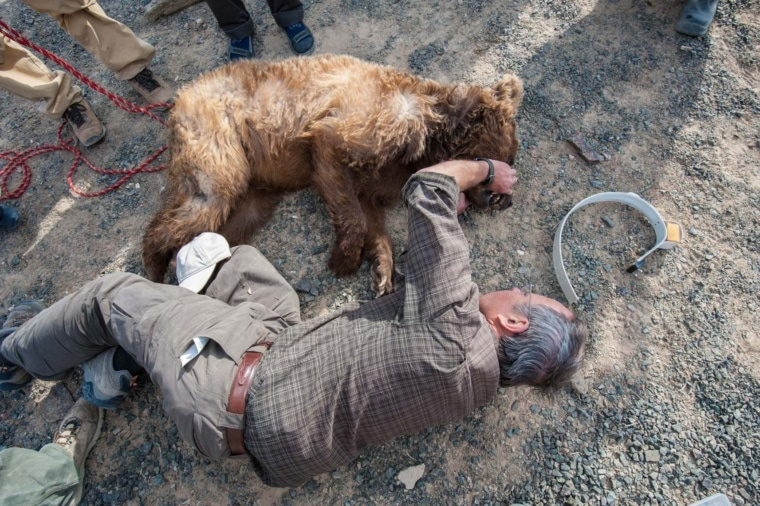
Don't worry, the bear is fine. He is examined, hanged radio collar and released. This is how the population is controlled.
There is even a feeding program - in the spring, by the time the animals come out of hibernation, people lay out special nutritious granules for bears. Scientists are working hard to restore the population of these special animals, but sometimes Not everything can be solved by laws and food. Against the global warming biologists have nothing to oppose.






















